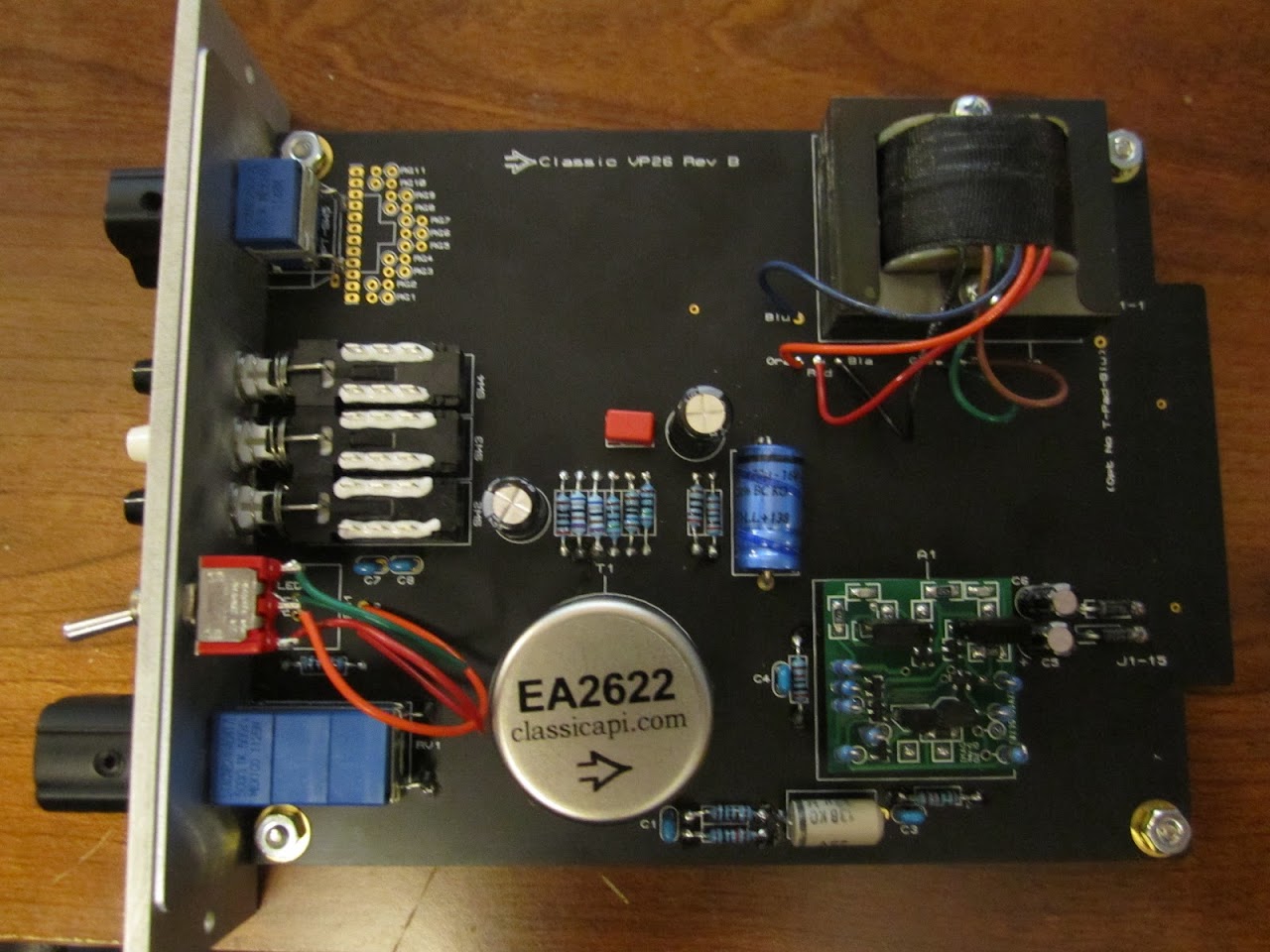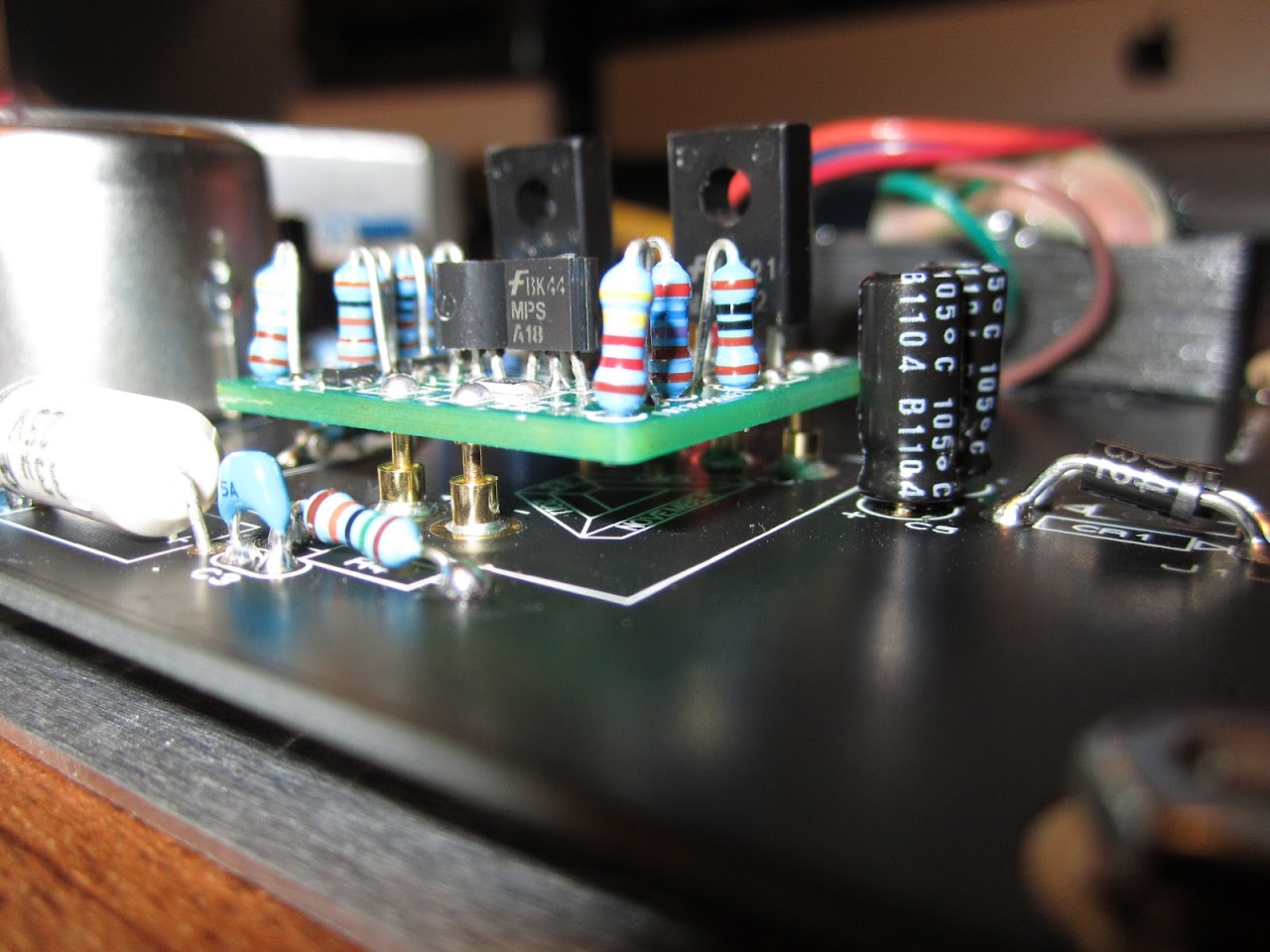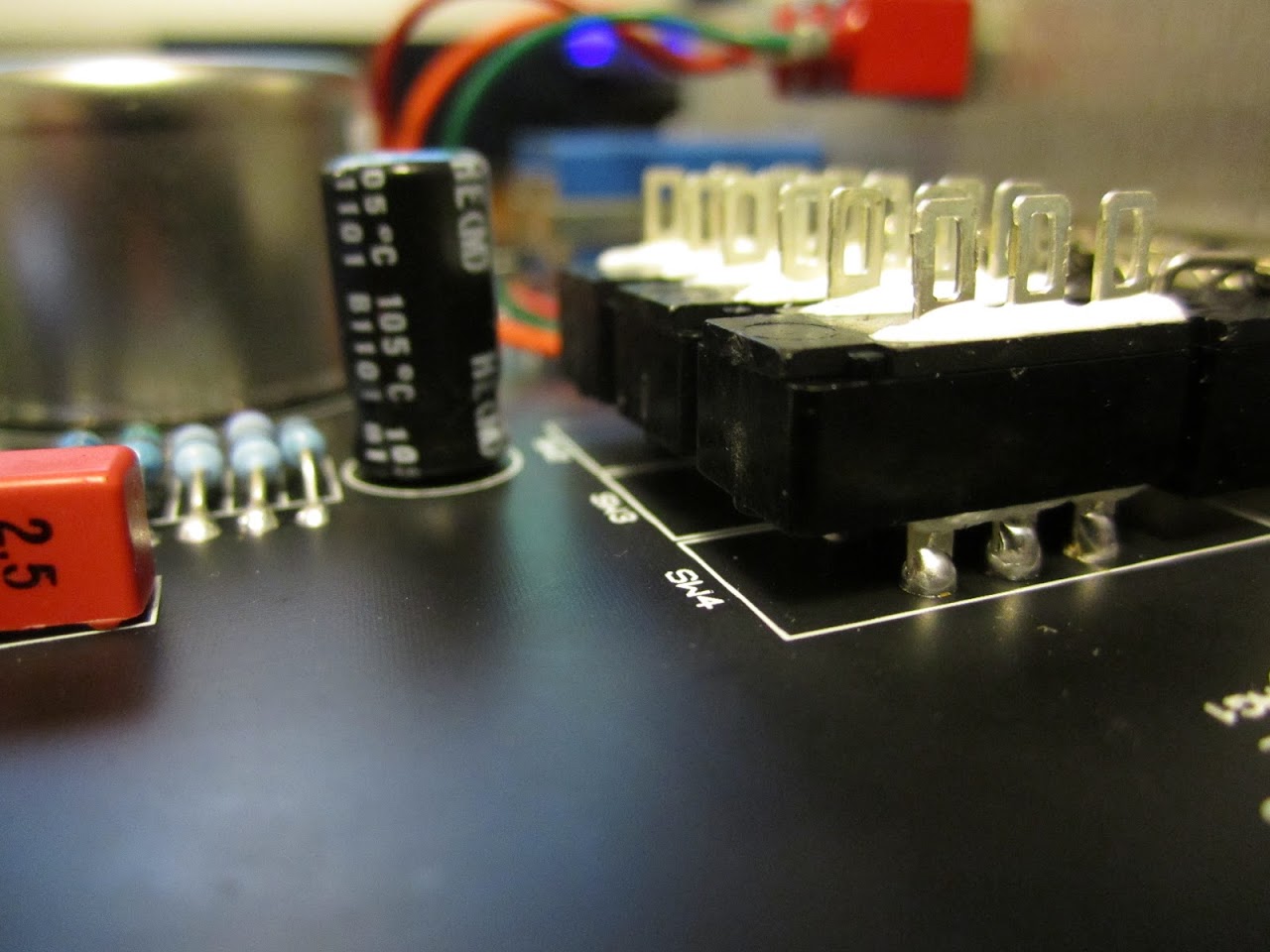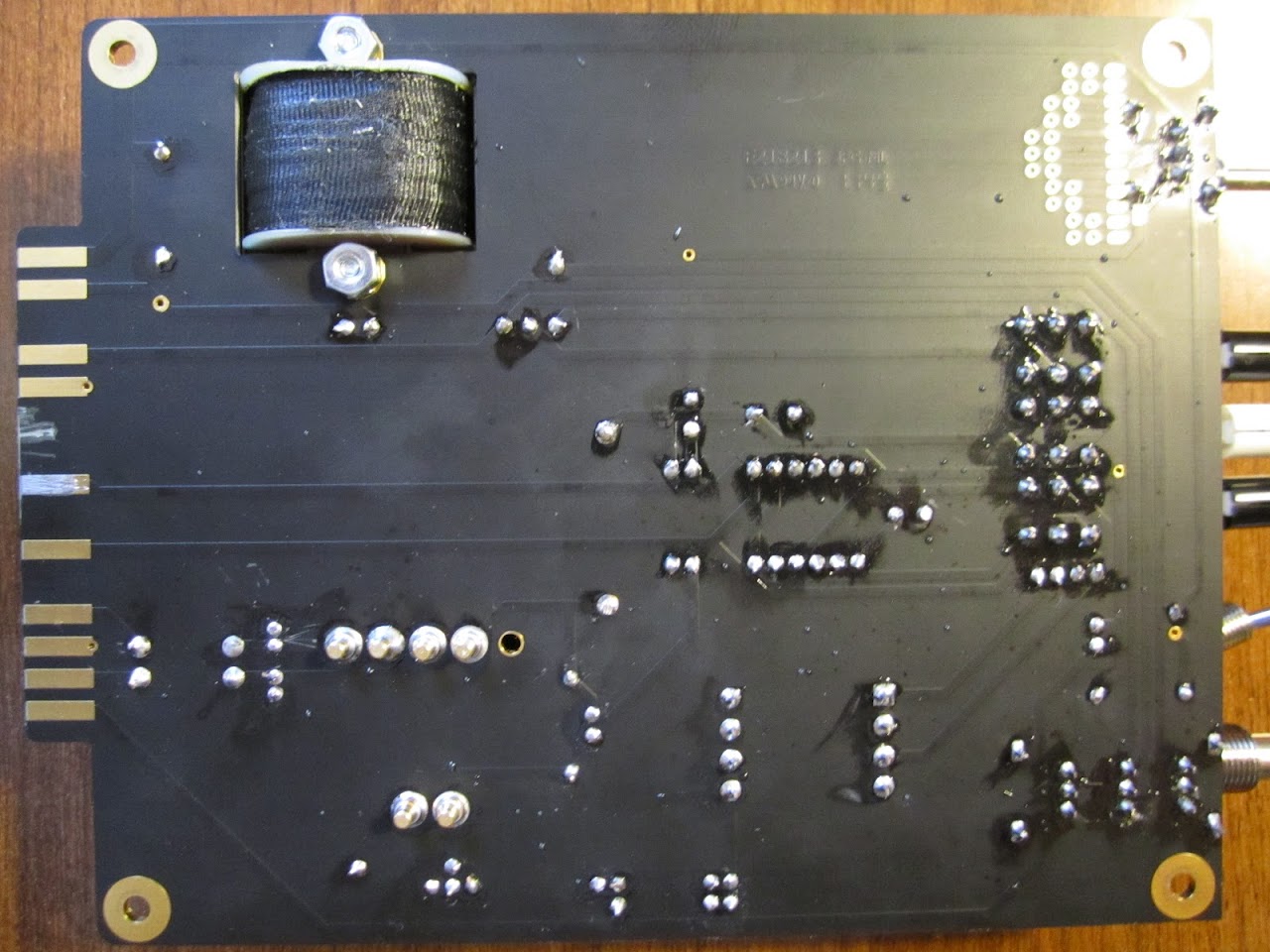Close Max but you need to stay on ACV. That is the only way you will be able to measure if audio is present. With a source injecting signal, the black probe where it was, probe with the red to all 6 of the solder lugs on SW4. Let me know what you get for each one.
BTW, a mic level input will be very low. It will increase if you check at the + side of C6 due to the gain of the 2622. It will increase more after the DOA if you check either side of C10 (depending on how high you gave the gain pot set). That is the same reading you should get on some of the lugs of SW4.
I myself have never used the iPod/speaker probing method. Only a DMM, scope or an AP.
Best, Jeff
BTW, a mic level input will be very low. It will increase if you check at the + side of C6 due to the gain of the 2622. It will increase more after the DOA if you check either side of C10 (depending on how high you gave the gain pot set). That is the same reading you should get on some of the lugs of SW4.
I myself have never used the iPod/speaker probing method. Only a DMM, scope or an AP.
Best, Jeff




![Soldering Iron Kit, 120W LED Digital Advanced Solder Iron Soldering Gun kit, 110V Welding Tools, Smart Temperature Control [356℉-932℉], Extra 5pcs Tips, Auto Sleep, Temp Calibration, Orange](https://m.media-amazon.com/images/I/51sFKu9SdeL._SL500_.jpg)































